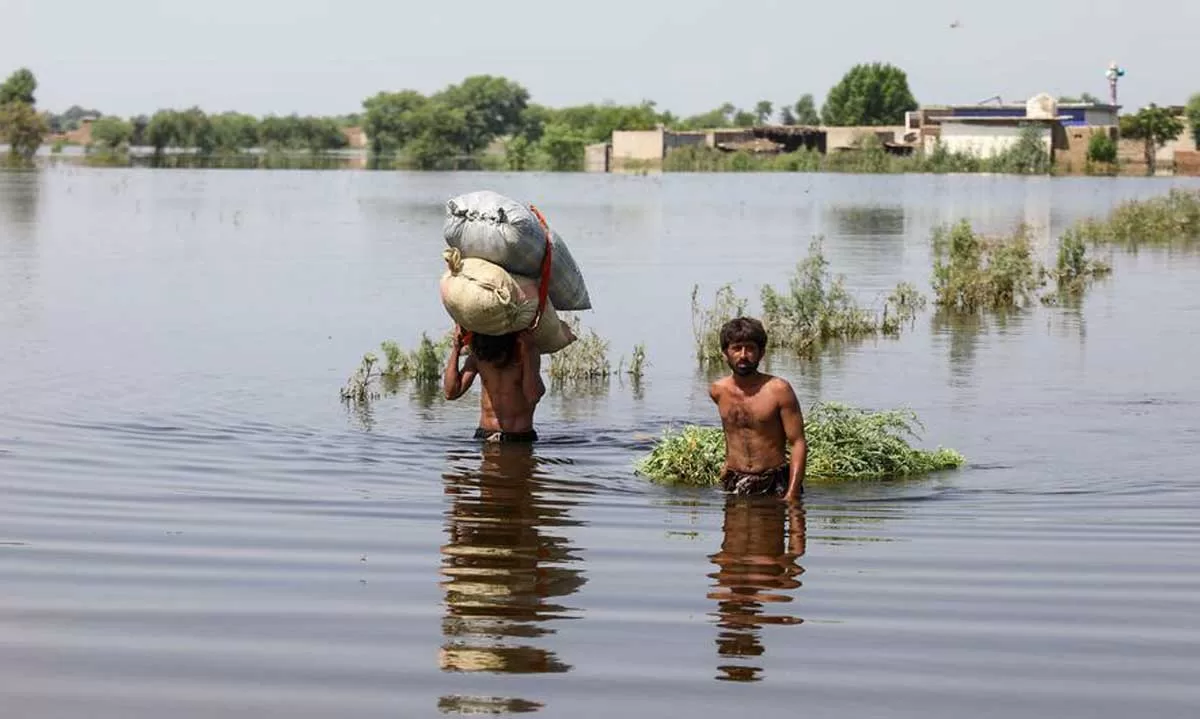While enjoying my morning coffee in the beautiful refreshing monsoon weather of Islamabad I often think of the people who are being affected by the these monsoon rains. In Pakistan, rain is a trouble rather than a blessing and the monsoon rains give us a worrisome future predictions. The rains bring massive and catastrophic flood swiping out entire villages and yearly fields.
Pakistan is one of the most vulnerable countries towards climate change.
The consistently recorded high temperatures over the year are ringing bells of upcoming disasters. According to the World Bank report Pakistan’s GDP to shrink by 20% by 2050. With an already declining economy, this report is enough for the officials to frame better policies to bring the country out of troubles. In 2024, the devastating floods and extreme heat is hindering economic recovery of the country.
According to world economic forum the term used as “eco-anxiety” is prevalent among youth of Pakistan. As, with climate change the opportunities will shrink further. In a country where basic education is not being provided, with climate change, education will become a forgotten responsibility particularly in the rural areas. The shrinking economic opportunities and rising inflation is having a huge impact on the youth. Eco-anxiety refers to the “chronic fear of environmental doom”.
Looking into the past events, in 2022 devastating floods affected 33 million residents and caused $15 billion in damages. On the other hand, unbearable heatstrokes killed hundreds of people in Karachi city. With a declining economy and rising unemployment, climate change caused floods are bringing the challenge of displacement of people. Due to floods people are losing their means of earning such as lands. fields and homes. This displacement is mainly taking place in the rural areas of Baluchistan and Sindh. The shift of people from rural to urban areas brings burden on the cities and its limited resources. For example, the water scarcity in Karachi and issue of housing in Islamabad. These interlinked challenges have a huge impact on the mental health of people. The fear of losing native lands which are the sole means of earning for thousands of families, loss of life is causing stress and anxiety among the masses.
Persistent floods and poor mitigating strategies by the government has led to an ending cycle of displacement and despair among the masses. The areas which are highly affected includes remote areas of Sindh, Baluchistan, KPK, where mostly people are dependent on agriculture for earning livelihood. It is becoming a challenge to meet basic needs for survival. This defiantly causing depression and anxiety.
The outdated infrastructure and ongoing political instability in the country is further exacerbating the unaddressed challenges of climate change. In between political tug of war, the life threatening issues are not being addressed the way they should be.
The government of Pakistan has taken few initiatives to address the problem of climate change. This includes building of climate resilient houses in Sohbatpur district of Baluchistan, tree plantation drives, National Climate Change Policy, Framework for Implementation of Climate Change policy 2014-2030. CPEC is also incorporating “green projects” for example, 1440 MW of clean and green energy. But the efforts are slow as compared to the visible manifestation of climate change in the country.
The rising unemployment collided with climate change will worsen the economic condition of the masses. It is high time to drive the economic policies in such a way that ensures reversal of the damages to the environment and natural assets. The government needs to address the increasing stress level of the citizens because mental well-being as important as physical health. It is high time for the government to come up with meaningful collective responses.
